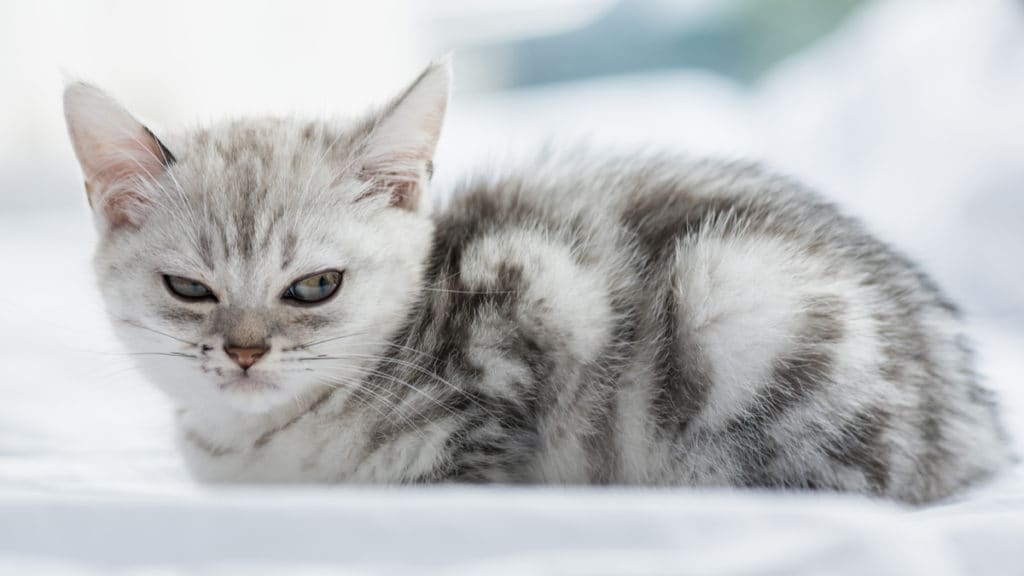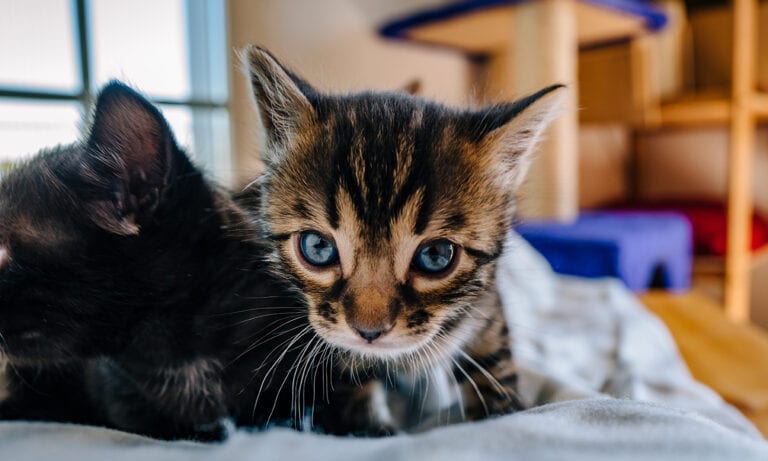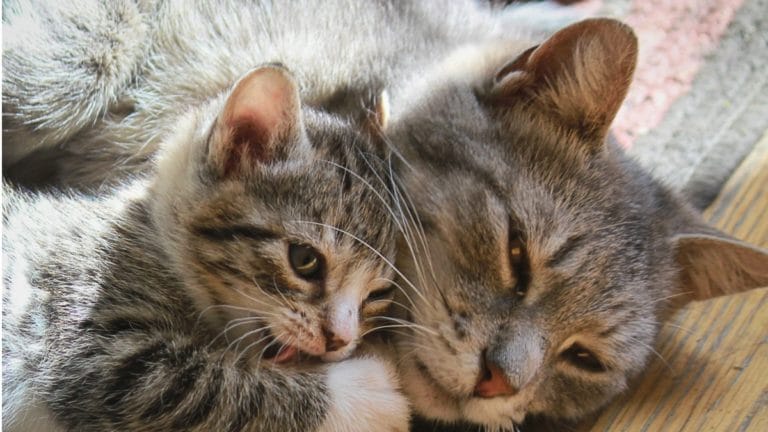Feline aggression is a very common cat behavior issue seen by animal behaviorists, second only to litter box problems. While an aggressive kitten might seem less harmful than an aggressive adult cat, aggression isn’t something to take lightly. You will want to understand what is triggering your kitten’s aggression and work to diffuse and prevent this behavior.
Aggression is complicated and refers to a variety of behaviors that are triggered for different reasons under diverse circumstances. Feline aggression is threatening behavior towards another cat, human or other animals. This behavior can range from cats who hiss and avoid the target of their hostility to cats who full on attack their target. For this reason, you will want to understand your kitten’s body language and be on the lookout for the tell tale signs of the buildup of aggression in your kitten.
What Does Feline Aggression Look Like
Feline body language is subtle and is made up of facial expressions, body postures and the position of cats’ ears, tails and even their whiskers. Understanding what your kitten’s body postures mean will help you manage problems more effectively, and this will lead to a better relationship with your kitten into adulthood.
Aggressive behavior can be either offensive or defensive. A cat on the offensive tries to appear larger and more intimidating. A defensive cat does just the opposite by trying to appear smaller.
Offensive postures can include: upright ears, rotated slightly forward; fur standing on end, including a puffed out fat tail; and stiffened rear legs with the rear-end raised and the back sloping downward toward the head. A cat on the offensive will have a direct stare, constricted pupils and be directly facing and possibly moving toward the target. You might hear growling or even yowling from your cat in this heightened state of offensive aggression.
A defensive cat will be crouching, head down with her tail curved around the body and tucked in. Her eyes will be wide open with pupils dilated and her ears will appear flattened sideways or backwards. Defensive cats will turn sideways to their opponent with open-mouthed hissing. Her whiskers may be retracted or may be out and forward to help judge the distance between the danger zone and herself. Your defensive kitten may strike out with her front paws with exposed claws.
Kittens are of course going to play, so rough play is natural among kittens and adolescent cats of less than two years old. Kittens learn through play with each other to suppress their bites and sheathe their claws when roughhousing with each other. They quickly learn when play is too rough and causing pain to their playmates — the result is retaliation, and play time will stop. Kittens who were orphaned or weaned early might never have learned to temper their play behavior.
Play aggression can be spotted in your kitten’s body posture. Her tail will be lashing back and forth, her ears flat against the head and her pupils will dilate. This behavior might develop after a normal play session that escalates into biting and scratching. Kittens who stalk or hide and then jump out and attack you as you pass are also exhibiting a form of play aggression.
If you leave your kitten alone for long hours at a time without any opportunity to play, she may be bursting with energy and play extra rough when you interact with her. This is more than likely just play and doesn’t mean that your kitten is aggressive. Kittens typically play quietly. If your kitten is growling or hissing, this is a sign things are getting too aggressive.
Our Gracey was orphaned at only a few weeks old, so she did not have the opportunity to learn how to inhibit her biting and claws. She loved to leap onto my back from the top of the furniture when I walked by. Sometimes it truly scared the dickens out of me, and her little claws digging into my back was a bit painful. To overcome Gracey’s ninja maneuver, I increased our play time together. I used a wand toy to encourage Gracey to chase and pounce on the moving target. She also loved batting about a simple aluminum foil ball. I would throw the ball ahead of me while walking so she chased the ball instead of attacking me.
Solution to Kitten Aggression
I was spending a lot of time at my office and thought she must be getting lonely, so as a perk of owning my own business, I began to take Gracey to work with me. This solved the leaping kitten attacks, and I must say I liked having her keep me company in the office as well. You might not have the option of taking your kitten to work with you, but do try to schedule plenty of playtime with your kitten when you are home together. Don’t encourage your kitten to bat at your fingers or toes, but rather redirect him away from you with a wand toy or by throwing a foil ball.
Make sure to provide a variety of cat toys for your kitten to chase and pounce on like prey. One of our other cats, Eddie, likes little fake mice that rattle, and he has a stuffed lion toy he carries with him everywhere. Our Annie likes to stalk and chase, so the wand toys are ideal for her. We make sure to engage in play sessions that run her until she tires out.
Try to keep the novelty factor with the toys you provide by rotating them. Keep out a few of their favorite toys and place others in storage for a while. Then change the toys out to keep your kitten’s interest. New objects don’t have to be expensive or complicated; a paper bag and a cardboard box are often just the thing to occupy your playful kitten.
You might consider adopting two kittens to keep each other company. If you can, choose a pair that has already bonded; perhaps they were kept in the same cage at the shelter or are from the same litter.
When your kitten starts to bite or scratch you, end the play session by leaving the room. This is a kitty time-out. Your kitten will learn that when she is too rough, play time ends. This will teach her not to be so aggressive. Do not try to pick up your kitten and put her in another room for her time-out as this might elicit more bites.
Don’t use toys that train your kitten to play with your fingers, like a glove with balls dangling from the fingers. This type of toy only tells your cat it is OK to direct her play at your hands, and she will not understand that it is only OK to attack your fingers while you are wearing the toy gloves. Don’t encourage your kitten to play with your feet or toes. You might find this behavior amusing when she is a tiny kitten, but you won’t think it is as much fun when your kitten grows up and her play becomes painful and possibly dangerous.
Never punish your kitten for rough play. If you slap your kitten or tap her nose, she may think of this action as play and retaliate even rougher. If you physically punish your cat, she might become afraid of you and respond by avoiding you, or worse, her play will turn into true aggression. When your kitten is playing a little too rough, do not run from her or try to block her movements. This action can intensify her actions and possibly cause him to become aggressive.
Your time with your kitten is precious. They grow up so quickly. While there is absolutely nothing wrong with a fun game of hide and seek and engaging in play with your kitten, just be aware of any signs that your kitten might need some direction on what is acceptable and what isn’t when it come to playtime.
By: Joanne McGonagle
Share:









